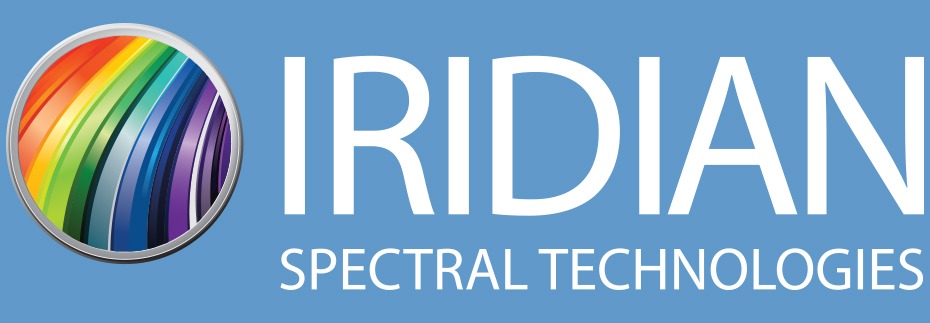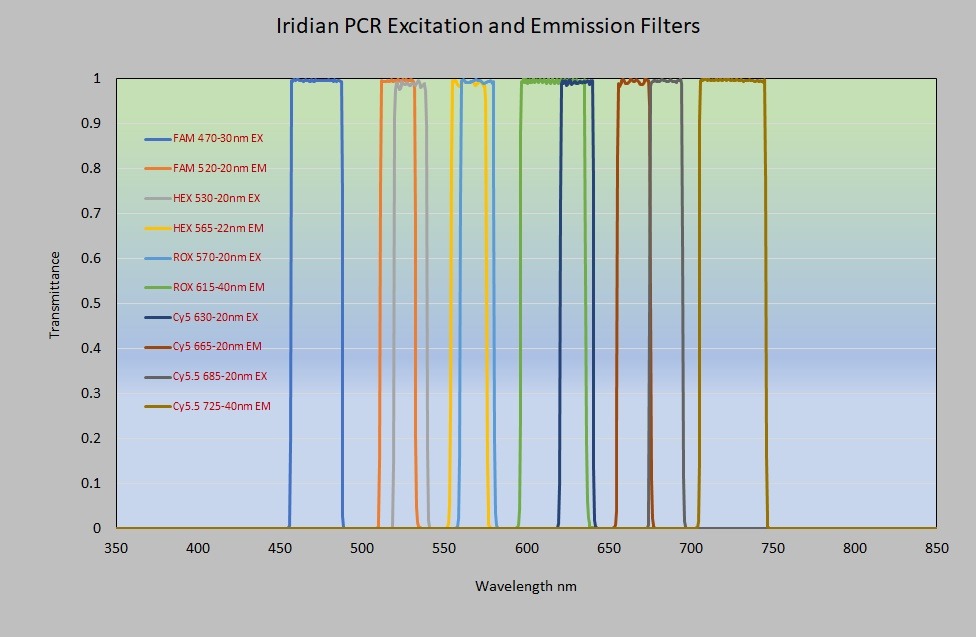To conduct data analysis of nucleic acid samples, typically DNA, a reasonable amount of DNA material is essential. Today’s standard approach is to replicate very small samples of specific DNA to obtain sufficient quantities that allow detection or identification for example in biomedical or forensic laboratories.
The common method is the polymerase chain reaction (PCR). PCR reactions or a form of wet chemistry procedure used to make copies of DNA sequences with an exponential multiplication rate over time. To get results as quickly as possible, quantitative or real-time PCR (qPCR) is carried out by using specialized PCR instrumentation. A PCR system comprises optical excitation and detection and thus qPCR instruments require optical filters as essential components.
Excitation, Emission and Beam Guidance
The general optics-based components of qPCR instruments are the excitation light source, excitation filters, dichroic filters, emission filters and detectors for fluorescence detection from the samples. Depending on the qPCR instrument, multiple variants of each optical component may be required in a system. qPCR is based on specific fluorophores that label DNA sequences. Thus, fluorescence detection of qPCR instruments relies on high signal-to-noise ratios and high sensitivity. Filters are therefore the most critical components in a qPCR instrument.
To narrow down the spectral range of the excitation light from an LED source for example, excitation bandpass filters are placed within the beam path. The center wavelength of the filter is adapted to each particular fluorophore. It blocks any light that possibly interferes with the fluorophore excitation. Excitation light is then guided towards the samples by means of dichroic filters. These filters direct light to the sample by reflection in a 90° angle below an edge wavelength. At the same time higher wavelengths can pass through the filter so that fluorescence emission from the sample can reach the detector.
The third type of optical filters that are essential in a qPCR instrument are the emission bandpass filters. These bandpass filters are matched precisely to the emission of specific fluorophores that label a DNA sequence in the sample. As some DNA samples consists of more than one fluorophore, correspondingly matched filters are required to selectively allow a signal detection from one particular fluorophore without interference with others. All three types of filters have in common that all signals are spectrally as isolated as possible from each other. As a consequence, all filters for qPCR instruments require a very steep transition edge between the passband and the blocking region outside the passband. At the same time, high absolute transmission is vital for detecting low intensity signals from samples such as qPCR as well as high OD in the blocking regime to guarantee high signal-to-noise ratios.
How You can Benefit from Iridian
As qPCR instrument maker, you may not always design your system for common standard excitation sources and fluorophores solely. Or you might aim for the highest performance of your qPCR instrument to satisfy your customer’s needs. Iridian’s expertise lies in design and manufacture of custom made filters to address individual requirements and enhance qPCR instrument performance or address specific commercial needs. For example, Iridian’s engineers can customize your specific spectral characteristics or filter size needs. Whether you need standard PCR filter solutions or specific support from Iridian’s expert knowledge in qPCR filter design, send us an email (istsales1@idexcorp.com) or call +1 (613) 741-4513.


